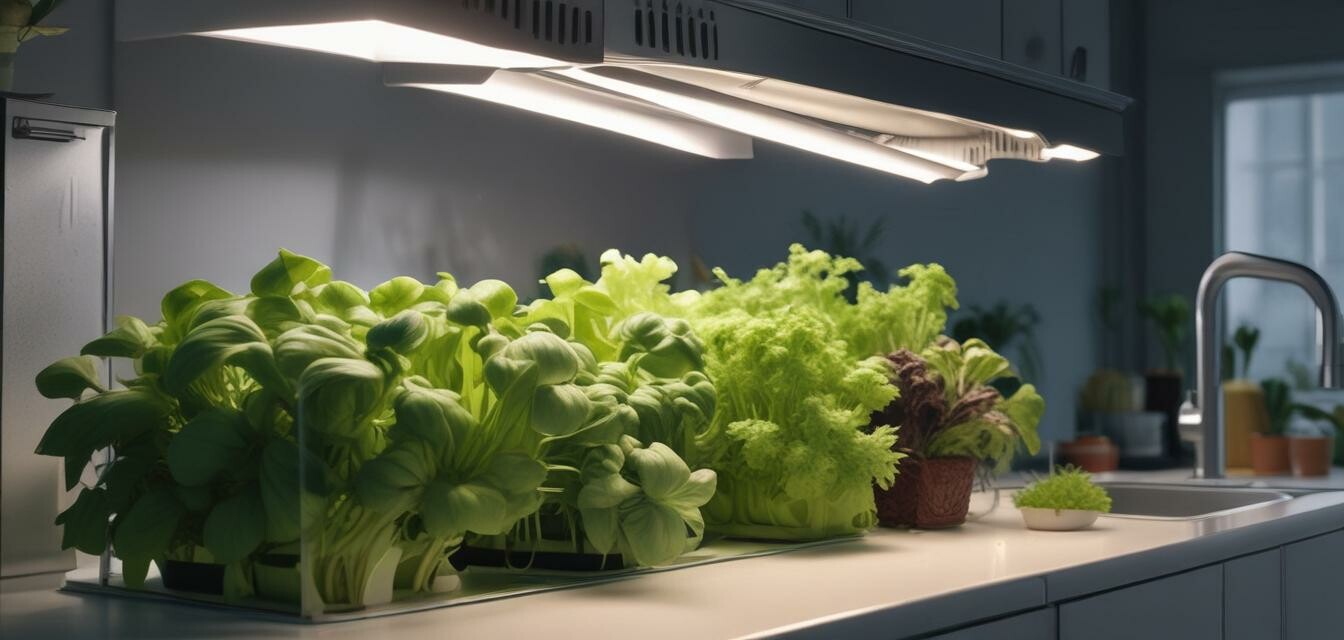
The rise of home hydroponics in 2025
Key Takeaways
- Home hydroponics is becoming increasingly popular due to space efficiency and sustainability.
- This method enhances food security by allowing individuals to grow fresh produce at home.
- The market for home hydroponic systems is expected to expand significantly in 2025.
- Innovations in technology and nutrient delivery are making home hydroponics more accessible.
The trend of home hydroponics is swiftly gaining traction in 2025 as more people recognize the advantages of growing their food without soil. With increasing urbanization, the need for self-sufficiency in food production is more relevant than ever. This article explores the reasons behind this rise, the benefits it brings, and its impact on food security and health.
What is hydroponics?
Hydroponics is a method of growing plants using a nutrient-rich water solution instead of soil. This innovative technique provides plants with the essential nutrients directly to their roots, allowing for faster growth and higher yields. Hydroponics can be implemented in various systems ranging from simple DIY setups to advanced automated systems.
Types of hydroponic systems
| System Type | Description | Pros |
|---|---|---|
| Nutrient Film Technique (NFT) | A thin film of nutrient solution flows over the roots. | Efficient use of nutrients and water. |
| Deep Water Culture (DWC) | Roots are submerged in a nutrient solution with oxygenation. | Fast growth due to constant nutrient availability. |
| Drip System | Nutrients are delivered through drip lines to each plant. | Great for a variety of plants and easy to manage. |
| Aeroponics | Roots are suspended in air and misted with nutrient solution. | Maximizes oxygen exposure, leading to rapid growth. |
The growing trend in 2025
In 2025, the movement toward home hydroponics is not merely a trend; it is a reflection of larger societal changes. The COVID-19 pandemic prompted people to reconsider their food sources, leading to increased interest in self-sustainable practices. Here are some reasons driving this growth:
Factors driving the rise of home hydroponics
- Food security: With uncertainties in global supply chains, growing food at home has become a necessity for many.
- Environmental concerns: Hydroponics uses significantly less water than traditional soil gardening, making it a more sustainable choice.
- Space efficiency: Hydroponic systems can fit in small spaces, making them perfect for urban dwellers.
- Health trends: Many are shifting toward healthier eating, and homegrown produce is seen as fresher and more nutritious.
Benefits of home hydroponics
Home hydroponics offers numerous advantages, making it an appealing option for many households. Here are some key benefits:
Pros
- Faster plant growth compared to traditional gardening.
- Less space required, ideal for apartments.
- Control over nutrient delivery leads to healthier plants.
- Reduced pesticide use compared to conventional farming.
Cons
- Initial setup costs can be high for advanced systems.
- Requires technical knowledge to manage effectively.
- Ongoing monitoring of nutrient levels is necessary.
Innovations shaping home hydroponics
As technology advances, home hydroponics systems are becoming more user-friendly and efficient. Innovations such as automated nutrient monitoring and IoT integration allow for real-time tracking of plant growth. Some emerging trends include:
Latest technologies in hydroponics
- Self-watering systems that adjust based on plant needs.
- Smart lighting solutions that mimic natural sunlight.
- Mobile apps that monitor plant health and nutrient levels.
Conclusion
As we move further into 2025, the rise of home hydroponics signifies a crucial shift toward sustainable living and self-reliance in food production. The advantages of this method, combined with advancements in technology, are making it easier than ever for individuals to grow their food at home. If you're interested in stepping into the world of hydroponics, consider checking out our hydroponic systems and grow lights to get started!
Tips for beginners
- Start small: Begin with one or two plants to learn the system.
- Research nutrient solutions: Understanding what your plants need is crucial.
- Regularly check your pH levels: Keeping pH balanced is very important for nutrient absorption.

